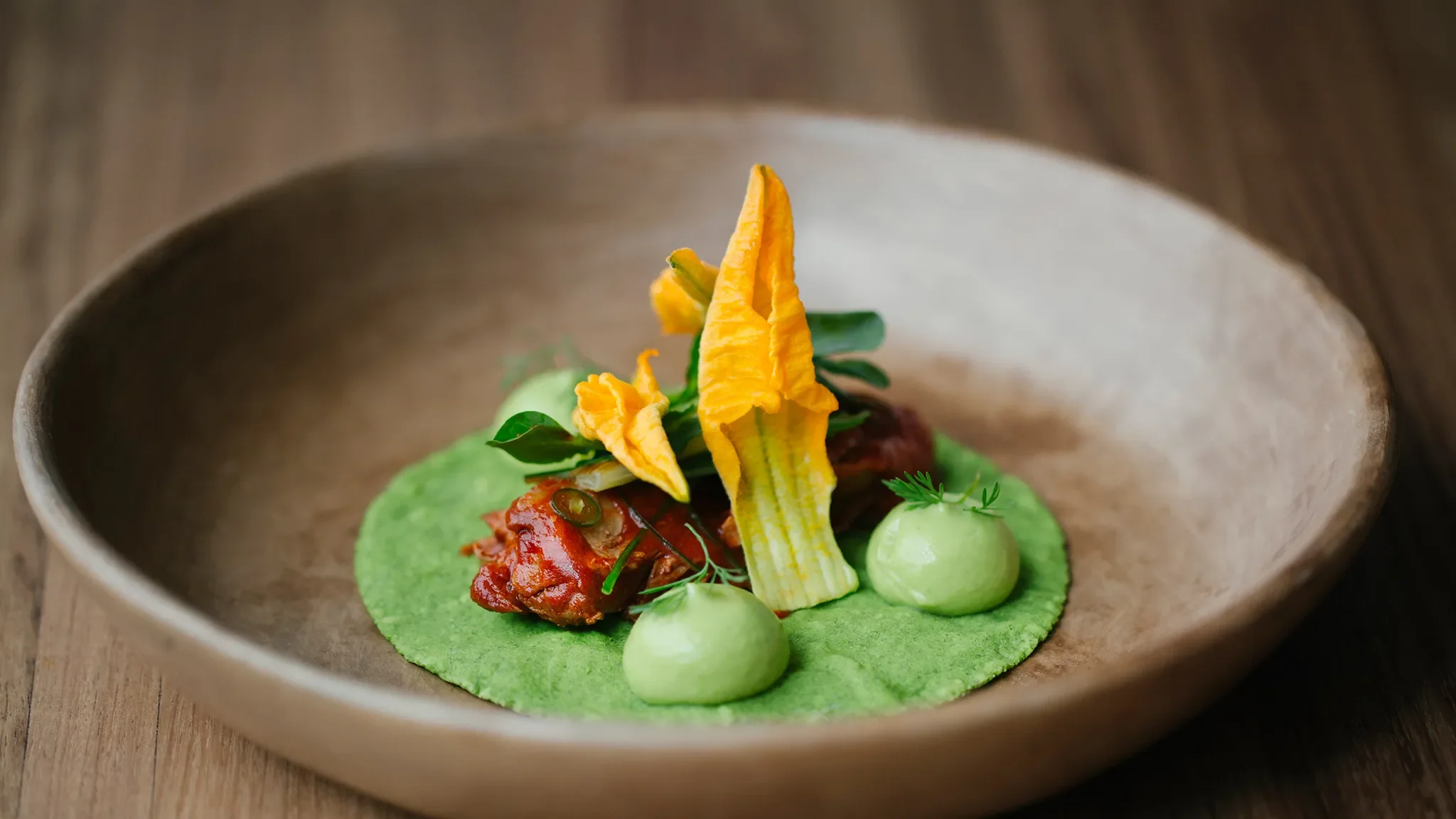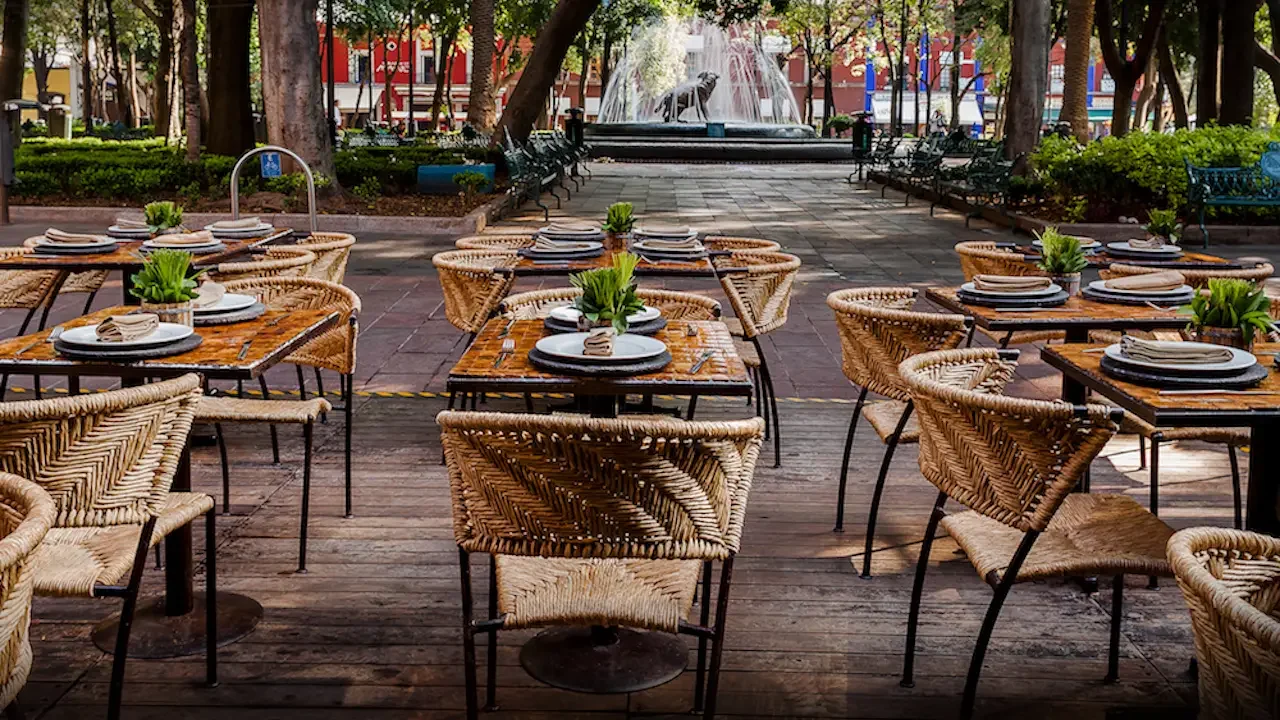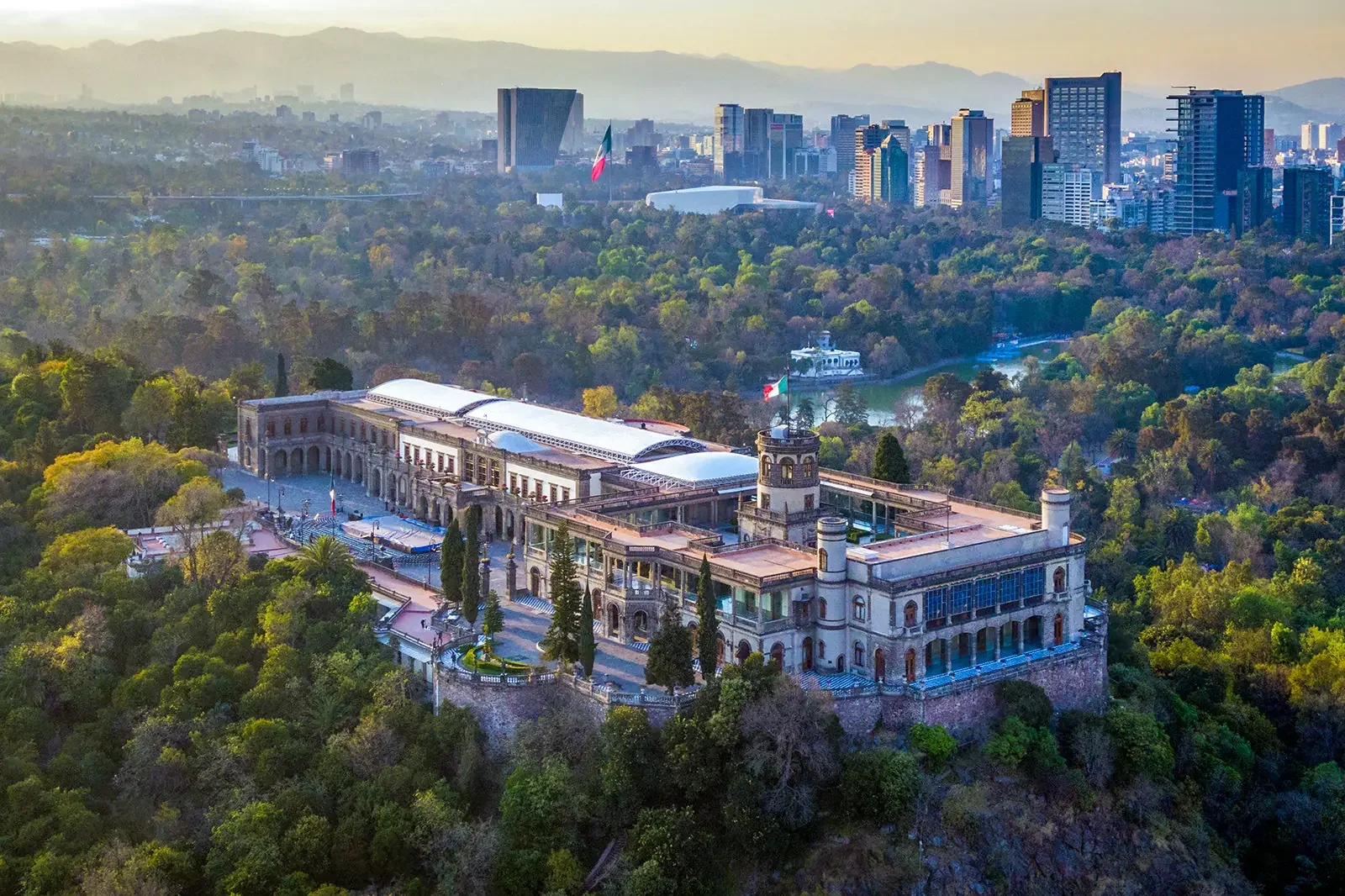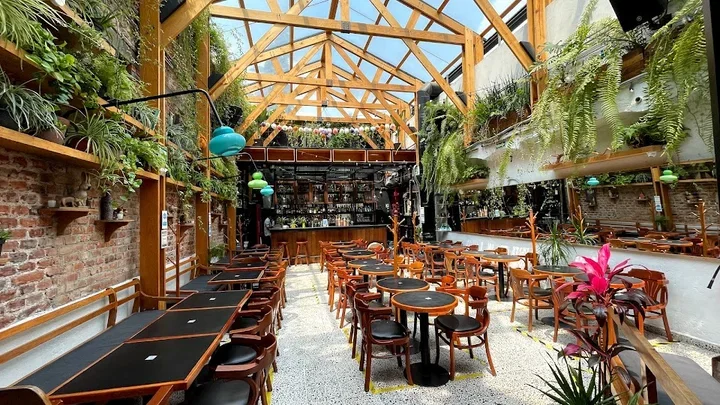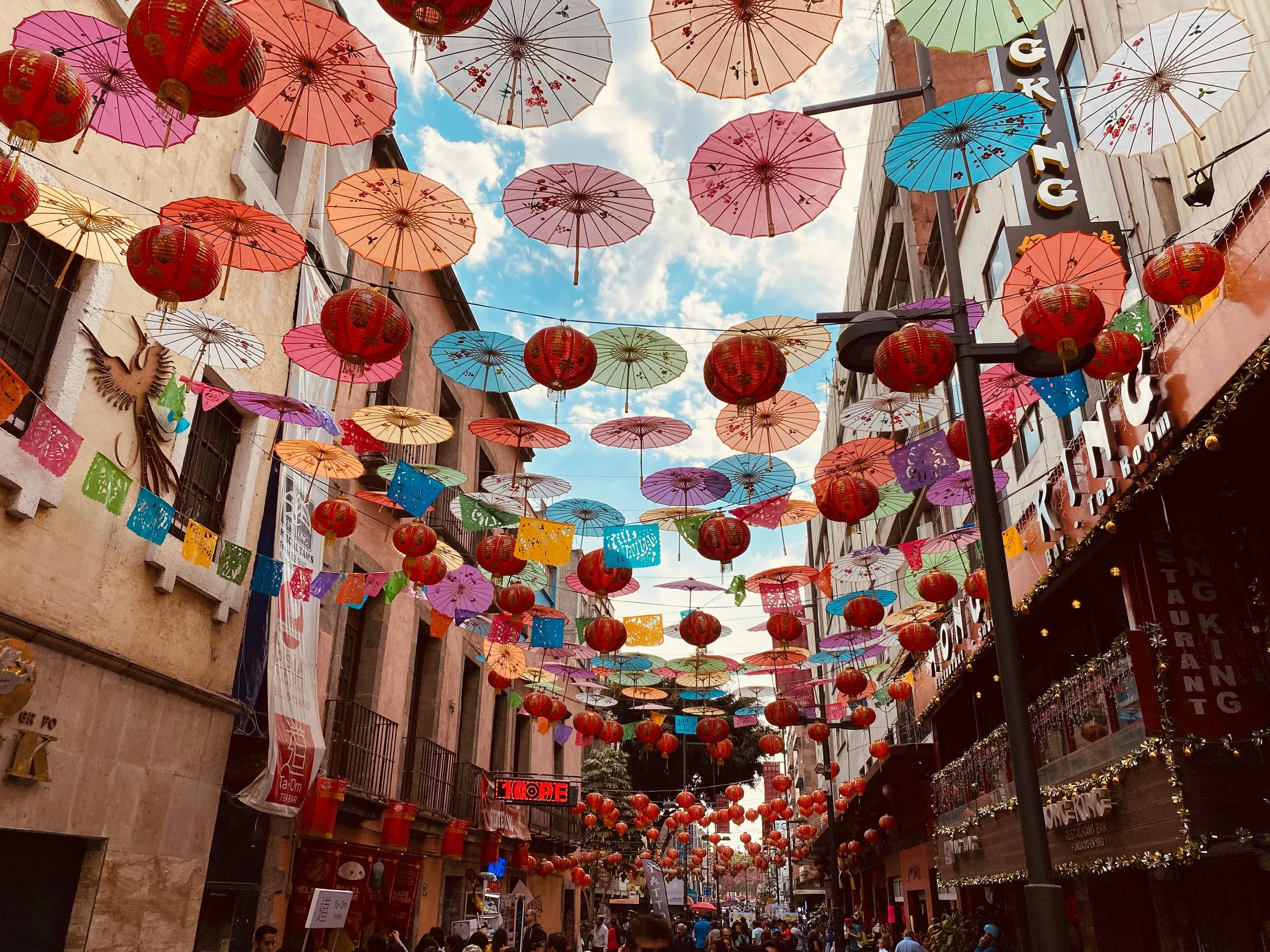Move over NYC. We don’t give Mexico City enough credit. Did you know the Greater Mexico City metropolitan area has a population of approximately 22-23 million, making it the largest metropolitan area in the Americas. Right behind Sao Paulo, it’s the second largest Spanish speaking city in the word. Mexico City has so much to offer. Four days isn’t nearly enough, but might as well start somewhere.
Day 1: The Pulse of the City — Smoke, Streets, and Soul
In Mexico City, life happens on the street — in the noise, in the grit, in the smell of roasting corn and exhaust.
El Cardenal (Centro Histórico) - Start with breakfast like a local — thick hot chocolate whisked to a froth, fresh pan dulce, and eggs drowned in green salsa. You’re surrounded by suits and families, not tourists. It’s elegant but real — the city at work and at ease.
Centro Histórico and Mercado de San Juan - Wander the old heart of the city — cathedrals older than most countries, vendors hawking everything from saints to cellphones. Then duck into Mercado de San Juan, where butchers, spice sellers, and adventurous chefs collide. Taste grasshoppers with a squeeze of lime or aged cheese from Oaxaca. The smells alone could knock you over — in a good way.
Museo del Palacio de Bellas Artes - Skip the crowds at Frida’s house today and head here instead. The murals by Diego Rivera, Orozco, and Siqueiros aren’t art — they’re political manifestos painted in rage and love. The building glows like a marble spaceship in the afternoon sun.
Pujol (Polanco) - Enrique Olvera’s masterpiece. Tasting menus here are stories told in corn, smoke, and memory. The famous “mole madre” — aged for hundreds of days — tastes like time itself. It’s not just food; it’s Mexico’s DNA refined and respected.
Day 2: Roma Norte — The Cool Heartbeat
Roma is what happens when chaos and beauty decide to move in together.
Panadería Rosetta - A neighborhood favorite. Try the guava pastry — it’s flaky, sticky, and almost spiritual. Watch the morning unfold through the open windows — dog walkers, artists, people who seem to have figured out how to live.
Roma’s Streets and Galleries - The architecture tells the city’s layered story — crumbling Art Deco next to sleek modernism. Pop into Casa Lamm Cultural Center, a mansion-turned-gallery that hums with quiet intelligence. Then head to Loose Blues, a concept store and café where design nerds linger over espresso.
Contramar - A seafood temple that feels like a perpetual Friday afternoon. Order the tuna tostadas — raw, fresh, perfectly balanced with chipotle mayo — and the grilled red snapper, split down the middle with red and green sauces. Loud, local, intoxicating.
Licorería Limantour - One of the world’s best cocktail bars, but it’s not about the list — it’s about the vibe. Bartenders who care. Locals laughing. A gin-based Mezcalina that could make you rethink your life choices. Stay late. Conversations get better here after 10 p.m.
Day 3: Coyoacán & Xochimilco — Old Soul, Floating Dreams
In the south of the city, time slows down. History lingers in the air, and the colors feel a little brighter.
Café Avellaneda, Coyoacán - A hole-in-the-wall espresso bar run by people who actually give a damn. Sip a pour-over while old couples shuffle past the cobblestone streets. You’re in Frida’s neighborhood, but don’t chase her ghost — just absorb the spirit that made her possible.
Mercado de Coyoacán - Forget fine dining — this is Mexico City’s heartbeat. Eat tacos de cochinita pibil, quesadillas de flor de calabaza, or a cup of fresh fruit sprinkled with chili and lime. Everything here drips authenticity and sweat.
Xochimilco Canals - The cliché is real, but there’s a way to do it right. Rent a private trajinera with a local guide, skip the loud tour boats, and glide through the floating gardens with a cooler of beers. Farmers still tend their chinampas — ancient Aztec agricultural islands. It’s hauntingly beautiful, and you can feel the centuries beneath you.
Los Danzantes (Coyoacán) - Stylish but grounded. Start with mezcal — smoky, complex, dangerously smooth — then order duck with mole negro or the cactus salad. Dine under the open sky, surrounded by locals who know the city’s best-kept secrets.
Day 4: Nature, Noise, and Nightfall in the Capital
For all its concrete, Mexico City still finds a way to breathe — to remind you it’s built on a valley that once floated on water.
Chapultepec Park and Castle - A massive green lung in the middle of the madness. Start early, before the crowds. The castle offers views that make you understand why emperors once thought they could rule from here. The park below teems with joggers, families, and street vendors selling roasted corn dusted with chili.
El Parnita (Roma Norte) - A hip cantina without the attitude. Go for the tacos de camarón enchilado (spicy shrimp) and aguachile verde. The place fills with laughter and mezcal fumes — the kind of spot where lunch easily becomes the whole afternoon.
Museo Tamayo or Jumex (Polanco) - Depending on your mood: Tamayo for modern Mexican art in a tranquil setting, Jumex for bold, international contemporary pieces. Either way, both offer the mental clarity of good design and quiet reflection.
Máximo Bistrot, then Hanky Panky Bar - End your trip in Roma Norte with refined, soulful cooking at Máximo Bistrot. Chef Eduardo García’s story — from migrant fieldworker to one of Mexico’s best chefs — is reason enough to go. Afterward, find the unmarked door to Hanky Panky, a speakeasy where every cocktail tells a story and every patron feels like an accomplice.
And more…
Here’s some of our favorite Nouns of Mexico. That’s right, enjoy these people, places, and things.





